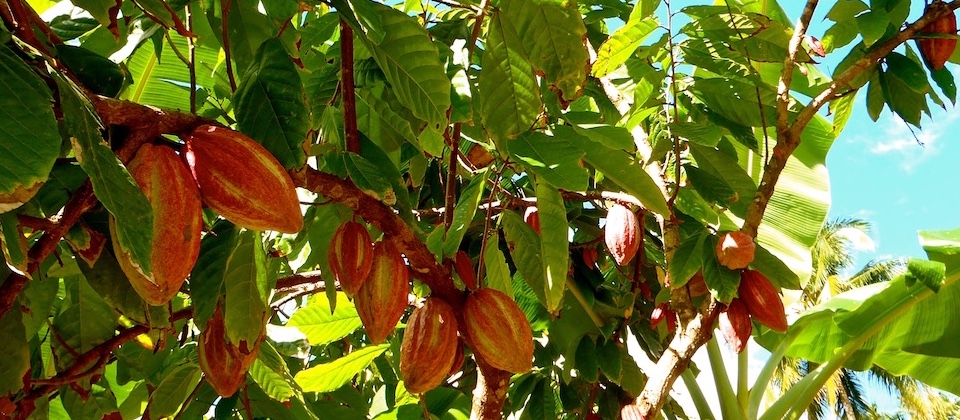
Published on 24 September, 2017.
If you are still looking for a reason to come to Baracoa, here’s a very convincing one (to be found nowhere else in Cuba) – the most delicious organic chocolate you’ve ever tasted!
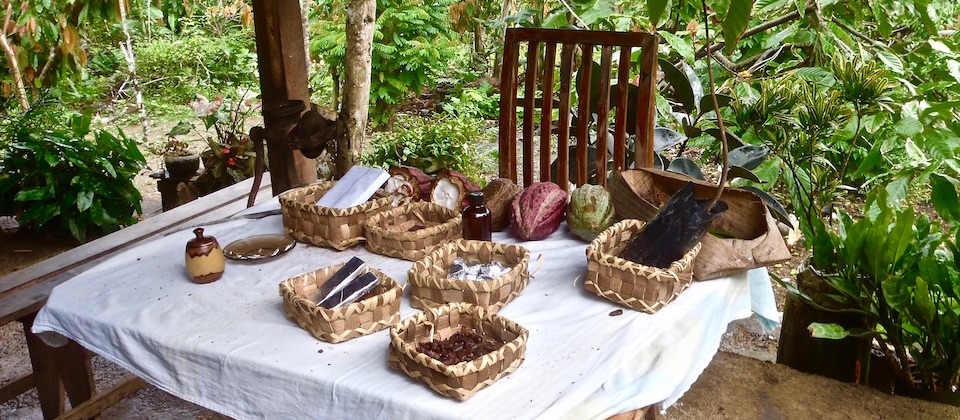
No matter what road you take in Baracoa, cacao farms will be waiting for you at every turn – small trees with trunks covered in flowers that will become pods loaded with the heavenly beans.
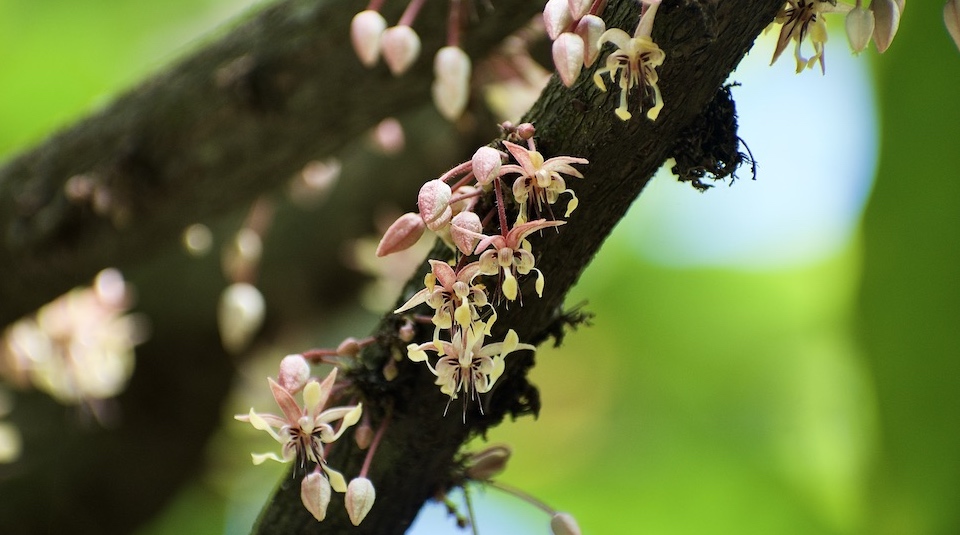
[Please note: this post was updated in July 2024.]
Cocoa – A Synonym of Baracoan Identity
Baracoa produces 75% of Cuba’s cacao, across thousands of hectares with the highest productivity-level farms in the country. Cocoa is one of the products closely linked to these lands’ identity – for centuries, our peasants have been taking care of it and improving it with dedication and love.
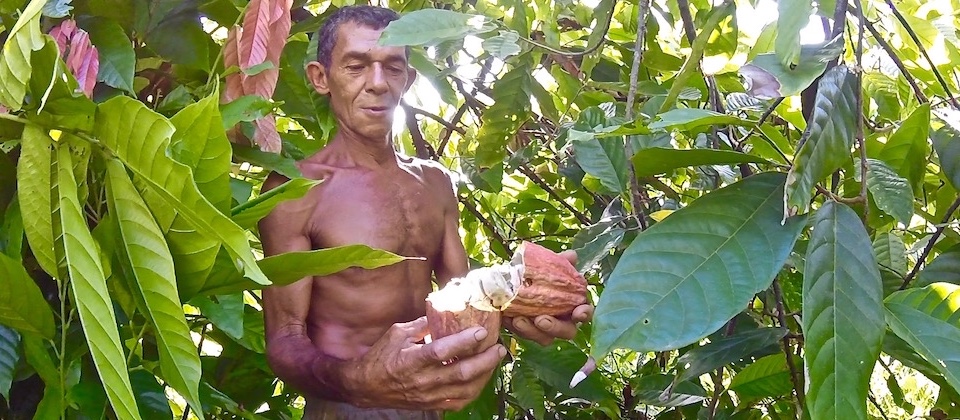
The art of cultivating cocoa is transmitted from one generation to the next. Baracoan producers know how to read the weather, their hands know how to prepare the land, trim branches, recycle non-utilized parts of the plants into organic fertilizer to improve soil quality.
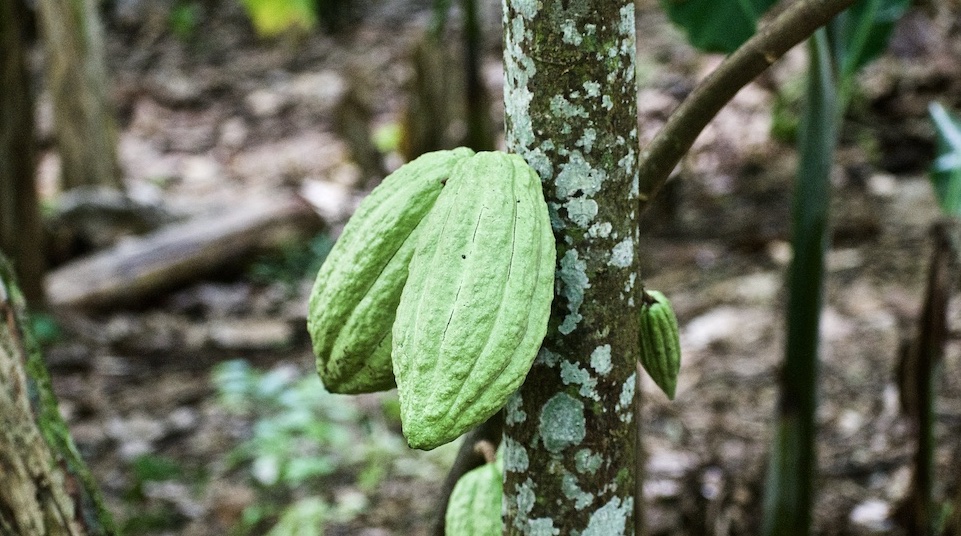
Traditionally, peasant families start the day drinking a nice calabash of chorote: a hot drink made with roasted cacao, coconut milk, and bananina – an artisanal plantain flour as a thickening agent.
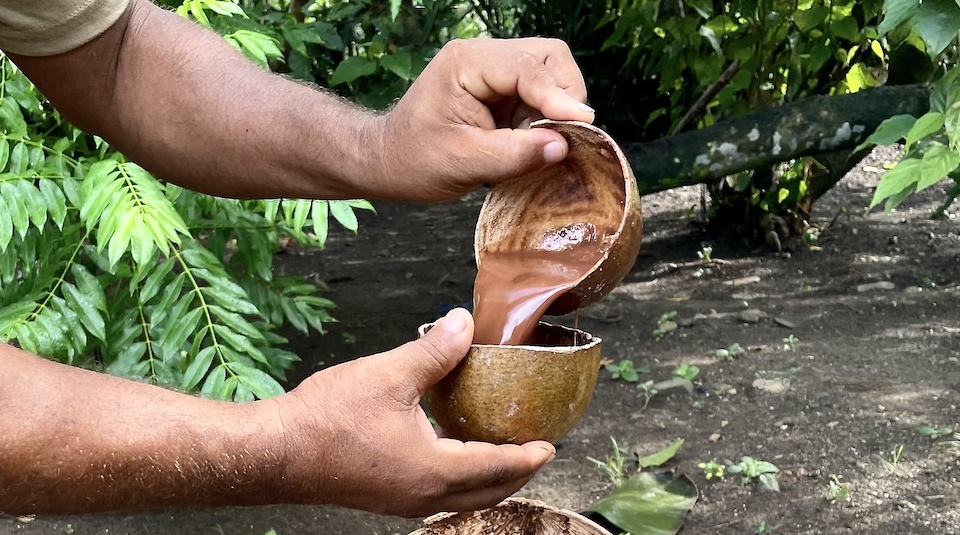
It usually has a cinnamon or vanilla aromatic touch. Excellent energy and nutrition for kids going to school and grown-ups working the land!
Las Mujeres Farm – Bearing the Cocoa Tradition in Baracoa
Whomever has had the pleasure of meeting Deisy at Finca Las Mujeres will never forget her. Named the “Cocoa Queen” by Alejandro Hartmann Matos, official historian of the City of Baracoa, she welcomes visitors with open doors and a warm smile to share with them the culture of cocoa.
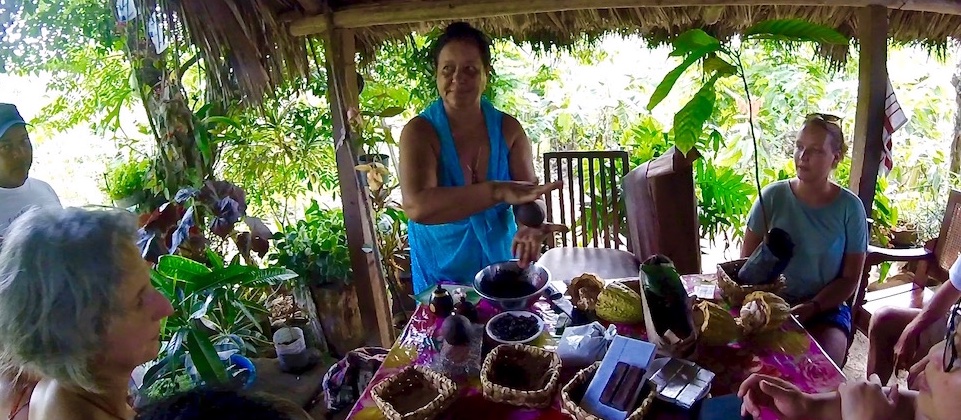
Las Mujeres farm covers 4 hectares. Deisy and her family work on their cacao trees all year long. Both the history of her community and the details of their everyday life surface through Deisy’s narrative about the stages of cultivating, harvesting and processing cocoa.
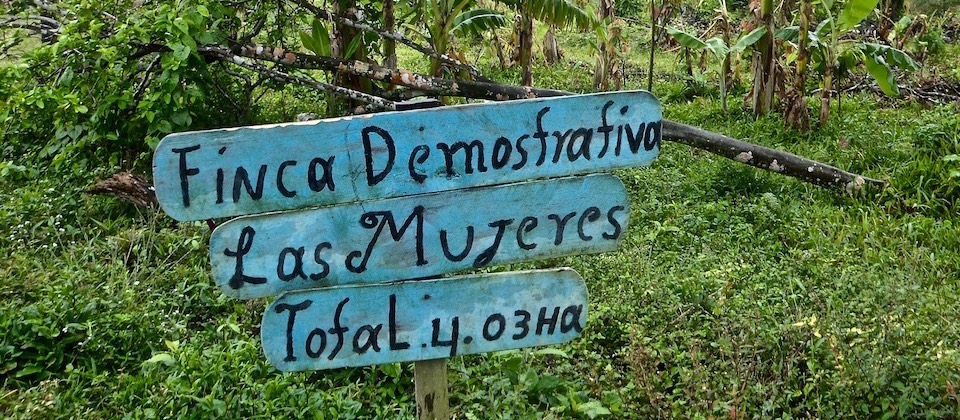
The climax of your visit to Finca Las Mujeres comes in the form of a tasting that awakens the senses. You will be able to savour the fresh pulp that wraps the ripe bean, the pure bean, the toasted bean, freshly ground cocoa paste, unsweetened cocoa, sweetened cocoa and the traditional chocolate bonbons. Such delights please travellers just as much as Deisy’s stories.
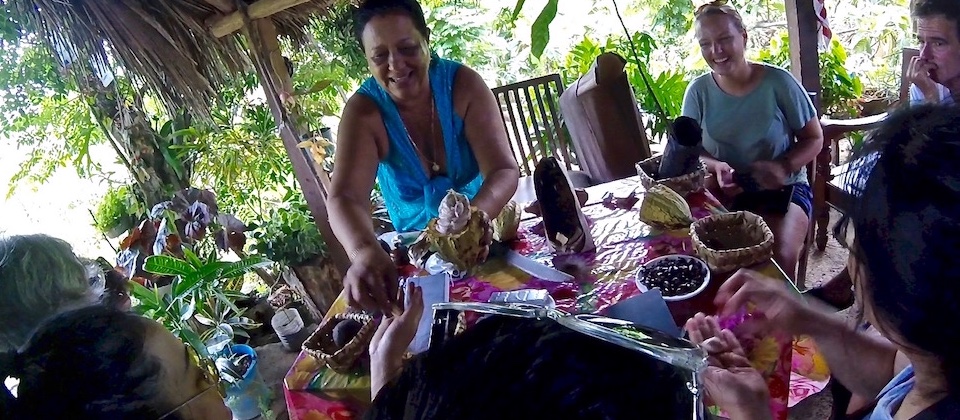
Che Guevara and this Territory’s Chocolate Future
Cacao production in Baracoa went through an initial boom in the early 19th century, when Haiti’s rebellion against slavery and its Independence stirred migrations across the Passage of the Winds to settle in Cuba’s East, including our region. These French migrants launched cocoa production using new techniques and methods.
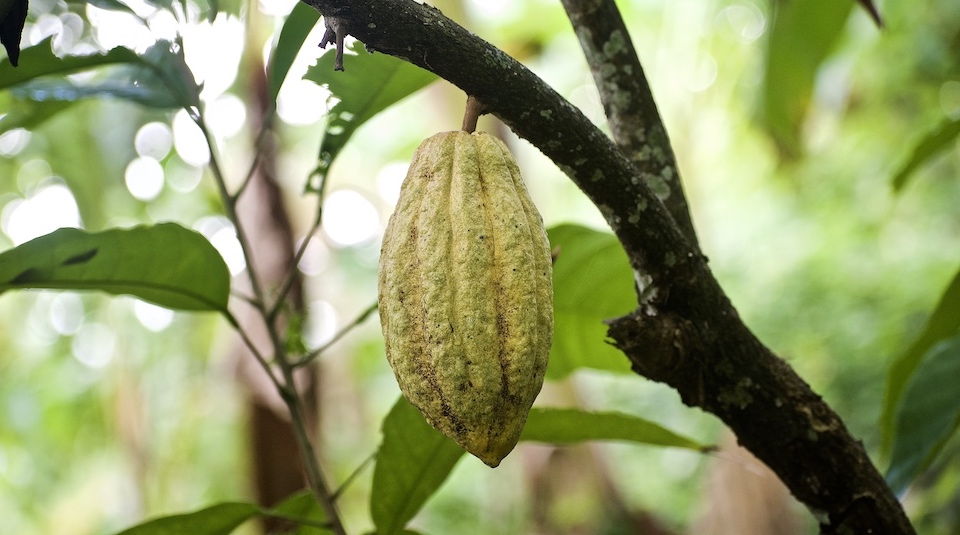
With time, cocoa production would undergo highs and lows for various reasons linked to the international market, one of them being the rise of banana production, which became the main Baracoan export for long decades. Once the Cuban Revolution arrived, cocoa would become again a core crop in the region.
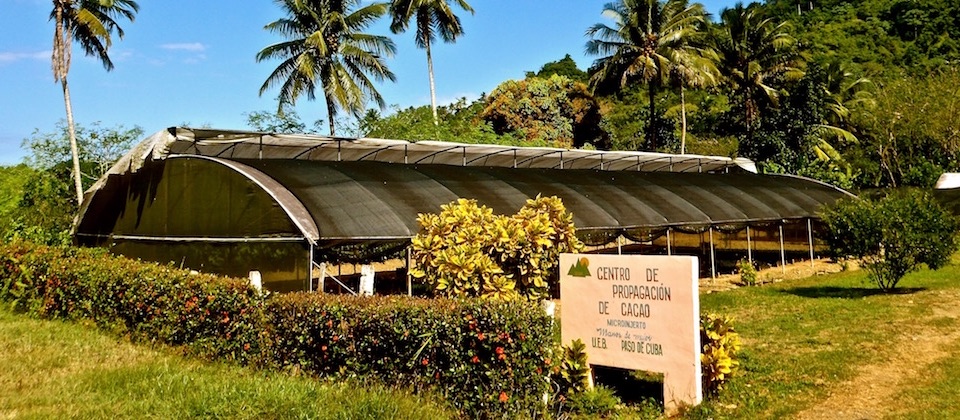
On April 1st, 1963 Che Guevara in his capacity as Minister of Industry opened the first (and still the sole) chocolate factory in Cuba. It is not open to visitors, but the exquisite aroma drifting from the factory is hard to miss as you pass in front of it when you go to river Duaba, mount El Yunque, river Toa, Maguana Beach and Alexander Humboldt National Park. Many travellers make a ritual stop here and take a good picture of themselves in front of the factory!
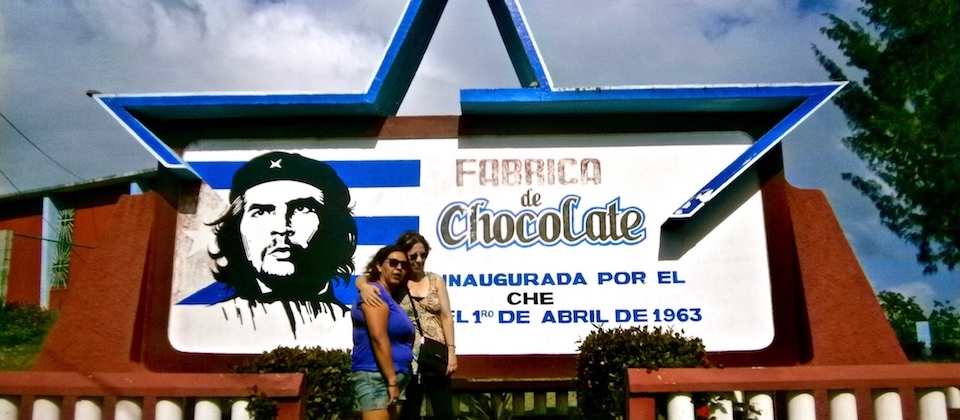
In 2011, the National Monuments Commission, an institution in the Department of Culture, invested these cocoa-producing lands with the statute of Protected Area, in recognition of their heritage value, placing them under appropriate management approaches.
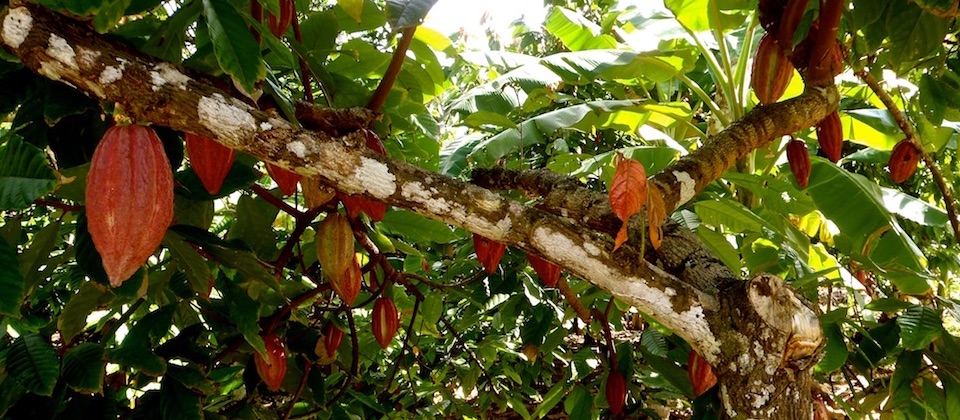
Fine Chocolatiers from All Over the World Come to Baracoa Looking for Cocoa
It is not surprising that chocolate producers from various countries come here looking for our cocoa beans in view of importing them. Such producers belong within the “bean to bar” category – they purchase directly from growing areas and use sole-origin batches to produce unique, high quality organic bars.
United Kingdom
In England, Willie’s Cacao is a fervent importer of Baracoan cocoa. In 2014, he wrote: “The never-ending Baracoa roast – exceptional beans.”
Senior diplomat Tim Cole, who served as the UK’s ambassador to Cuba between 2012 and 2016, shared this in September 2015: “Just discovered these at Willie’s Cacao. GREAT British chocolates made with cocoa beans from Baracoa.”
Vegan chocolate makers Coco Caravan created this bar that sounds delightful, sweetened with coconut sugar. It’s a dark chocolate, 72%.
Ireland
In Dublin, The Proper Chocolate Company announced last April 2017: “We’ll be previewing this hot little number at our Saturday market tomorrow: Cuba Baracoa with caramelized plantains and fire flame chillies.”
Artisanal chocolate crafters NearyNógs are also very creative using Baracoa beans: they make chocolate powder to prepare a nice hot cup, as well as rum-infused truffles, and 65% bars called Buena Vista Chocolate Club!
Italy
In Torino, Davide Appendino proposes a range of creations made from Baracoa cacao. Take for instance this classic, holiday panettone finished with a glossy layer of dark, 70% chocolate.
Switzerland
Over the years, well-known chocolate makers Confiserie Sprüngli have used Cuban cacao to create a range of flavourful truffles, dark chocolate bars and pralines. On their website, they talk about the “fruity notes of blackberries and pear, and earthy flavours of tobacco and coffee” of their bars made from Baracoa beans.
France
At his flagship store right on Place de la Madeleine, Patrick Roger proposes this 71% dark chocolate bar. The sculptor describes it likes this: “Notes of coffee, cherry, raspberry and finishing with a peppery hint.”
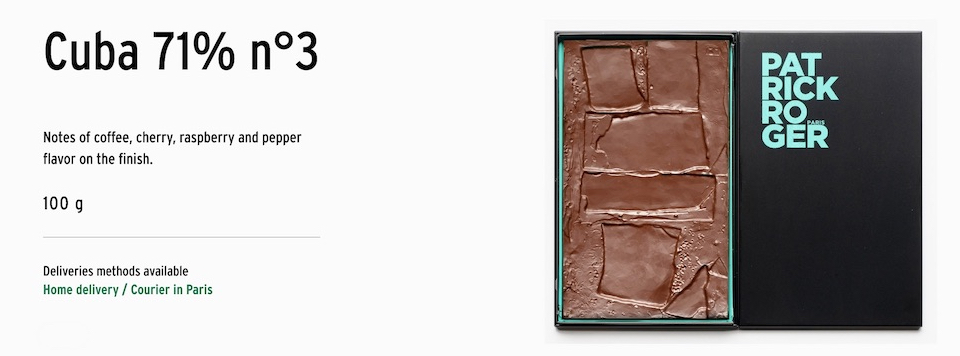
Fine chocolatiers Chapon have several boutiques in Paris, where they offer this silky dark chocolate bar (75%) made from Baracoa beans. Chapon says about it: “a blend of liquorice and cinnamon hints with tangy and floral notes.”
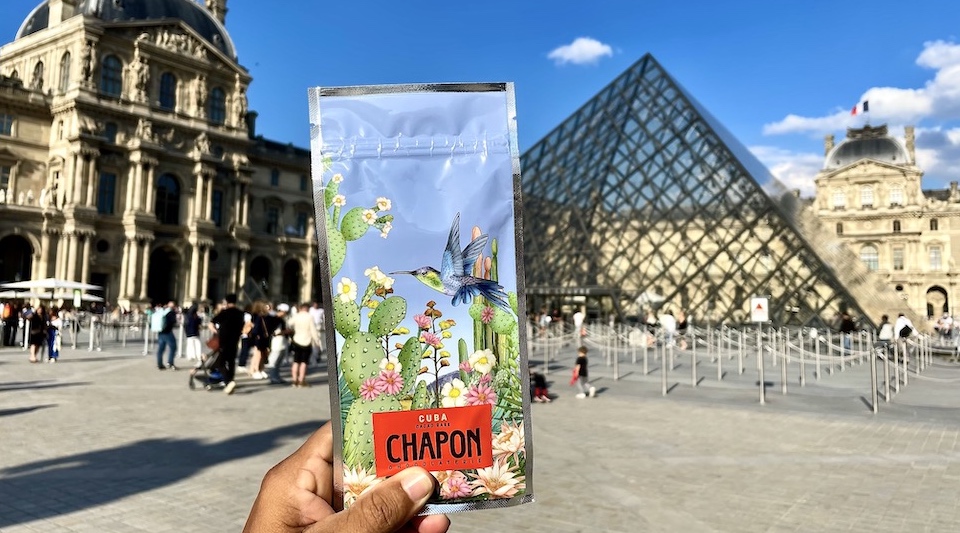
Belgium
From Brussels, artisan chocolate maker Benoit Nihant showed this video on Instagram: “LIVE FROM THE WORKSHOP. Grinding the beans. Origin: Cuba. Region: Baracoa.”
For his part, the highly creative Jean-Philippe Darcis offered a wide range of bars loaded with 62, 78 and even 96% Baracoa cacao, for the great pleasure of all tastes and palates!
Well-known chocolatier Marcolini has come up with these 72% bars, describing the result as “an intense and powerful flavour, hitting the palate with a series of unique aromas.”
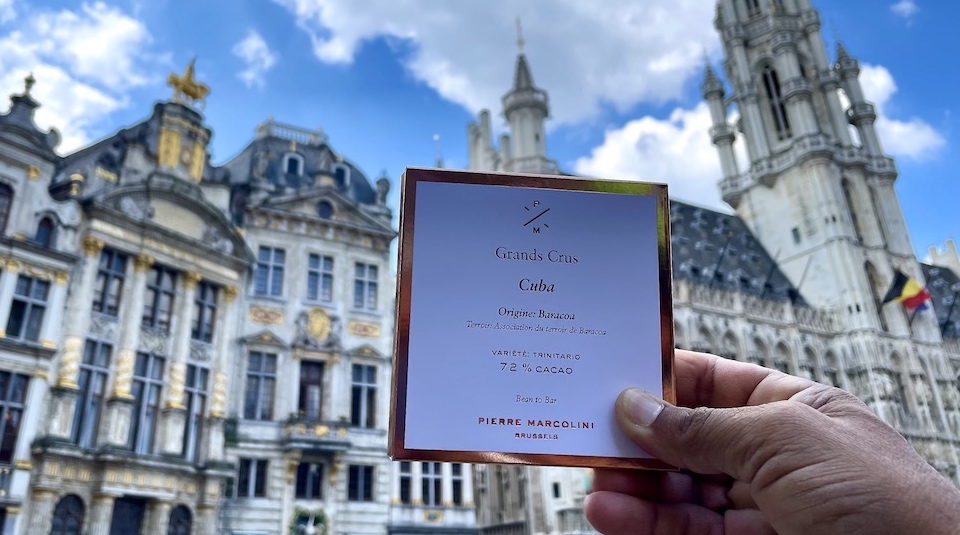
In Baracoa, you need to know where to find the best chocolate
After this long list of delights available in Europe, you may very well wish to taste Baracoa’s cocoa and chocolate right here, at the very terroir. Freshly roasted, freshly ground, with such rich and deep aroma and flavours…
The Famous Cacao Balls
The traditional organic cacao balls are very popular among travellers. Our guests leave Baracoa taking 2 or 3 (or more!), to grate them once home to make hot or cold chocolate. Hand-crafted at farmers’ homes, cocoa balls normally contain artisan plantain flour to thicken the chocolate drink.
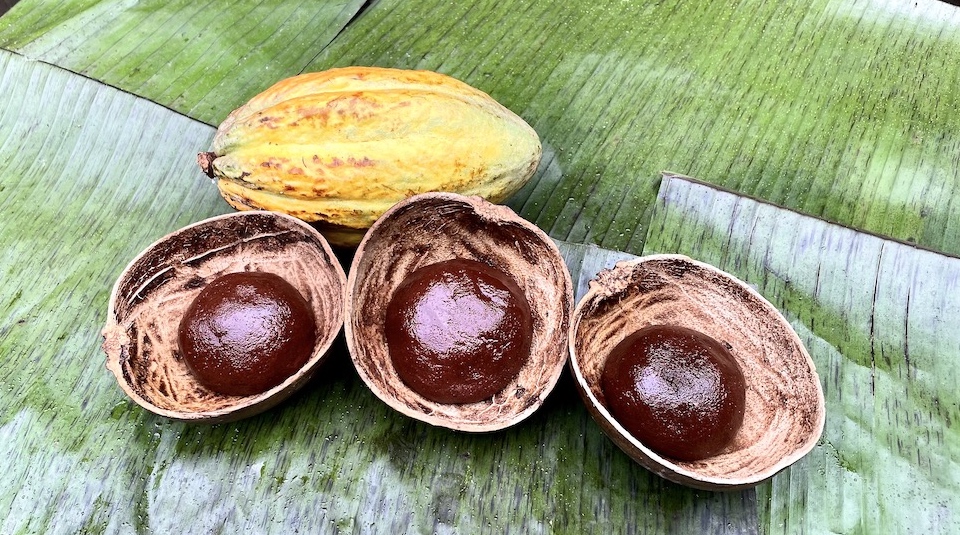
Make it a point to purchase them directly at the small farms that produce them, as intermediaries often sell lower quality products, with higher flour content (and it’s often wheat flour, not plantain flour), which can even be stale.
The Traditional Chorote Mix
If you’d like to prepare at home the authentic Baracoa chorote, your best bet is to buy the original, hand-crafted mix including roasted cocoa, cinnamon and bananina (the thickening, artisan plantain flour). Family-run farms sell it in plastic packaging. One you are back home, you’ll just need to dissolve the mix in coconut milk, heat it and sweeten it to your taste!
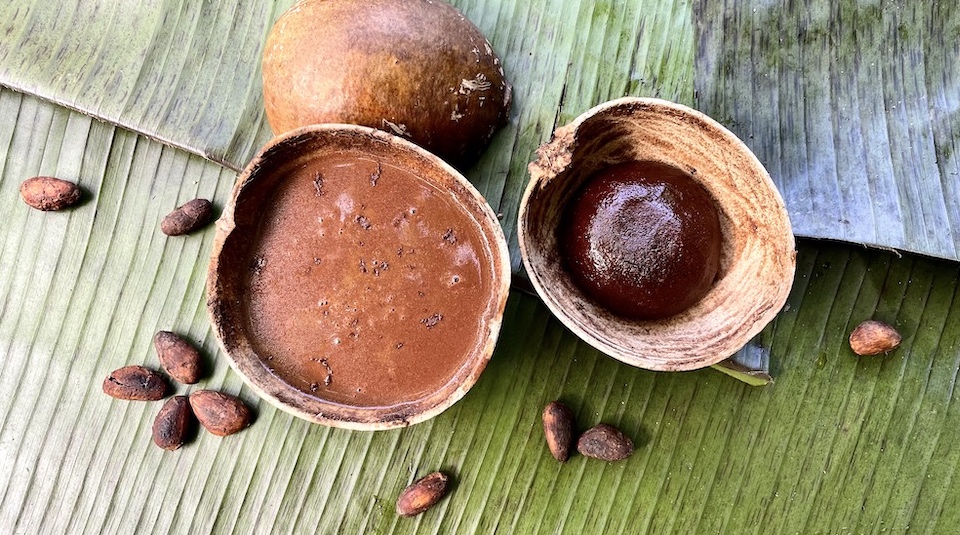
Pure Cocoa for Baking Lovers
For those looking for a grade A, versatile ingredient to prepare their best recipes at home, we recommend the larger bars of pure cacao – they contain nothing but artisan roasted, ground cocoa beans. Zero flour, zero sugar. It could also be a great rustic gift for that person in your life who loves making cookies, cakes, and all sorts of desserts!
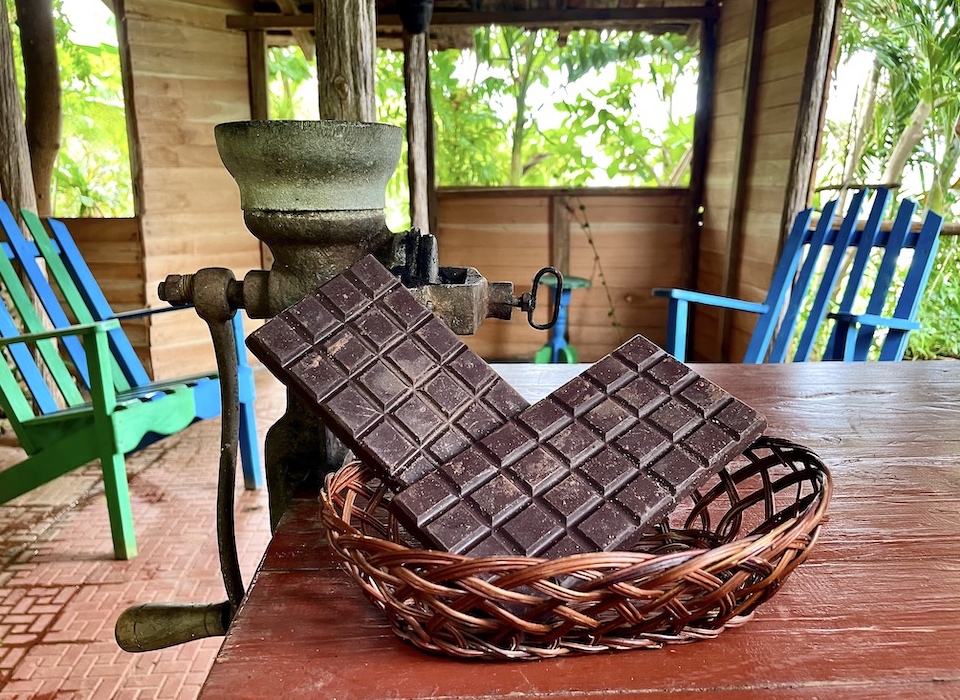
(All of these products travel well to your country: you just have to wrap them in plastic, so they don’t stain your clothes, and keep them refrigerated in your accommodations, out of direct sunlight and heat.)
Chilled Chocolate and Artisan Bonbons
Right on Baracoa’s Bulevar (our small downtown pedestrian strip) you can stop by at Casa del Cacao. They serve a delicious, super cold chocolate that’s heaven for the body and soul on an Eastern Cuban hot-as-hell day!
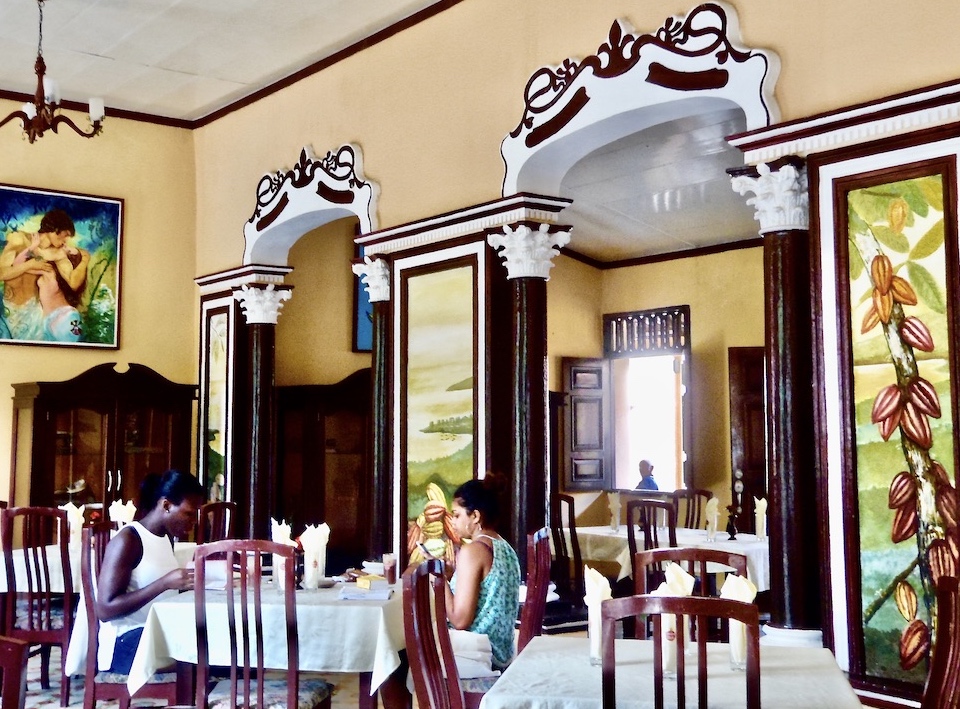
Recently, Casa del Cacao started selling great quality artisan bonbons. And there’s often cacao liquor in stock – another interesting ingredient for deserts and baking! Please make sure not to mix up Casa del Cacao and Casa del Chocolate. The latter is far from offering similar products and services.
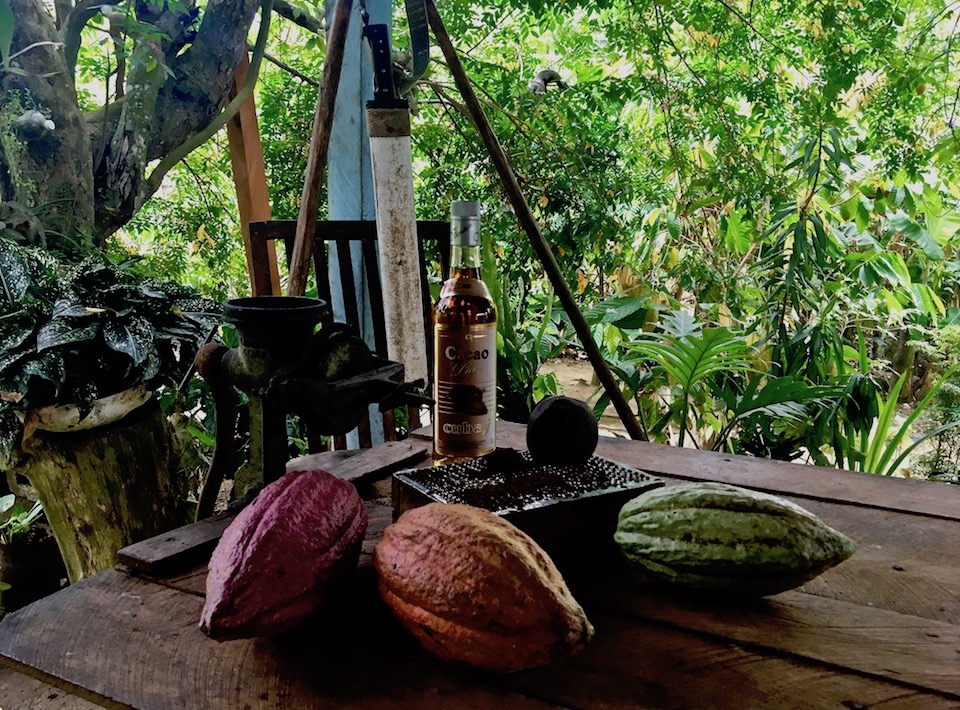
The Best Dark Chocolate Bars (As a Candy Snack)
And for folks who’d like to savour a delightful chocolate bar as candy or a snack, we have good news: after hurricane Matthew battered Baracoa in October 2016, our Chocolate Factory benefitted from a major investment that brought new equipment made by European firms Bühler and Mazzetti. Together with those machines, new techniques have been introduced to create silky, complex, and intense dark chocolate bars. These do justice to the best of our region’s cacao beans!
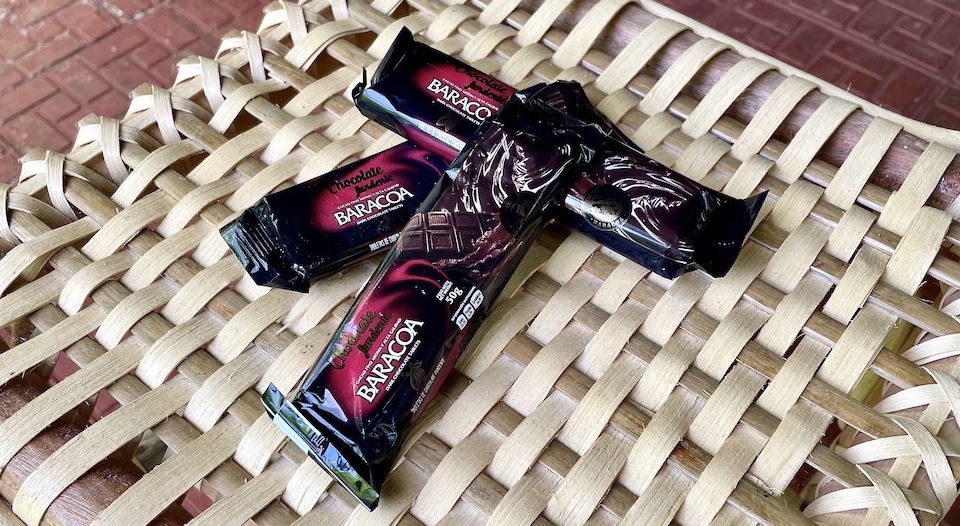
Did you know?
Cocoa butter has multiple uses, including as skin, scalp and hair care, and it’s very good to soothe and protect irritated, dry lips in the winter weather.
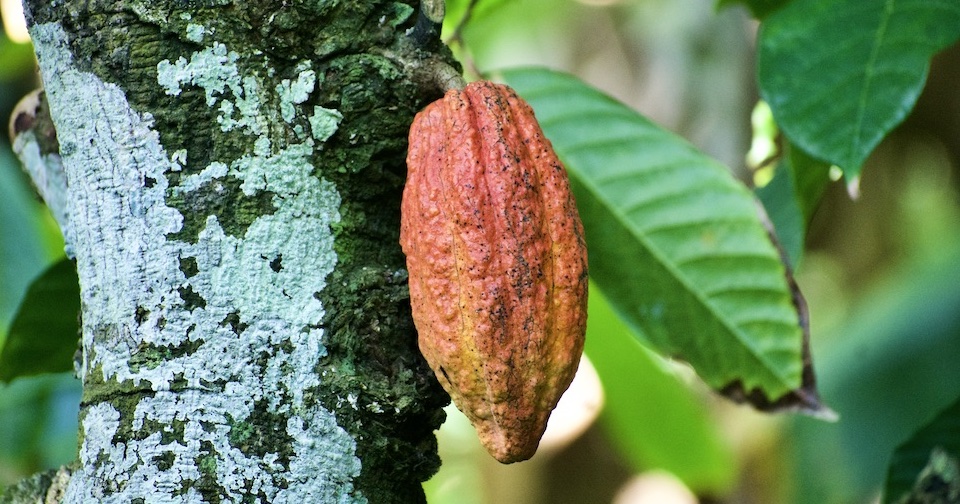
Cocoa has a number of beneficial properties for health, including cardiovascular and neurological health.
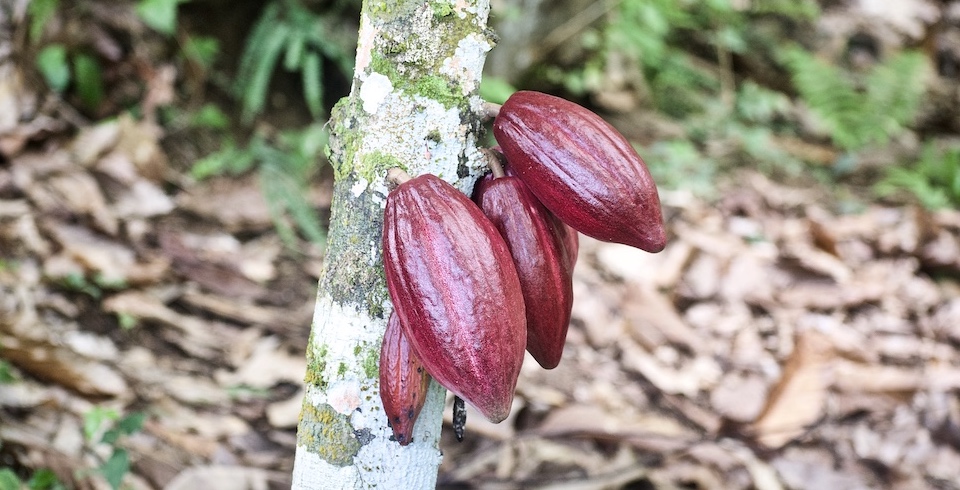
A recent article suggests a link between the consumption of chocolate flavonoids and cognitive performance. This link can be promising to treat diminished cognitive performance (attention, processing, memory) among senior persons and individuals who suffer from loss of sleep.
Practical information and budget tips
- The visit to Finca Las Mujeres is free. After the presentation of the cocoa culture and the tasting offered by Deisy and her family, visitors are welcome to buy the farm’s products: cocoa balls, unsweetened cocoa bars, sweetened cocoa bars, chocolate bars, bonbons, peasant mix to make chorote and cocoa butter. We encourage you to buy some of these products and support this family farm (or any other one in the area, such as Zoila’s or Lisbeth’s, who speaks German) so they can benefit from sustainable tourism
- The visit to Las Mujeres farm can be part of a one-day excursion that includes a hike in the Yumurí Canyon and an afternoon at El Manglito beach. A taxi for this itinerary costs 30 USD/EUR for the day. If you share this cost with other travelers, the per-person cost diminishes.
- These visits and excursions can also be done cycling. Finca Las Mujeres is located 15 km from Baracoa and you ride through very beautiful rural areas. If you decide to combine the farm visit with El Manglito beach, you will cover some 22 km (one way, plus 22 on your way back). And if you go all the way to the Yumurí Canyon, it’s 28 km one way, plus 28 on your way back.
- Renting a bicycle for the day in Baracoa costs between 5 and 10 USD/EUR.
- At Villa Paradiso we offer our guests complimentary cycling maps to the Baracoa region. We invite you to learn more about cyclotourism in the Baracoa region.
Activities, Baracoa, Sustainable Tourism
Tags: Agritourism, Culture, Cyclotourism, Ecology, Food, History, Natural Medicine

Recent Comments
What a wonderful post! I am very excited to be coming to Baracoa in July and will look forward to experiencing everything you have described. You might like to add Felchin and Sprungli of Switzerland, who are among those making excellent chocolate from Cuban cocoa beans, as well as Pralus of France (although I don’t see Cuba listed as a current origin on his site, I have eaten his Cuban chocolate.)
Thanks Doreen! Indeed: Felchin, Sprüngli and several others we’ve come across more recently. We will certainly add those soon! Thanks so much for the suggestions! All the best from Baracoa! 🙂
Are you kidding? I wish I knew this place existed. I have been to Cuba 5 times. Looks fantastic
Baracoa is Cuba’s best-kept secret! Now you have a good reason to come to our country for the 6th time! Thanks so much for having read the post! 🙂
It’s great to see a link about our 2 great countries in your blog. I do like to try the chocolate of any place I visit. I’ll be sure to do that in Baracao too.
Glad you enjoyed the article, John and yes – there you have a superb Cuba-Ireland connection! Until now, the best local cacao experiences have been in the family farms: the raw, freshly roasted beans made into artisanal bars or bonbons (nothing fancy but oh, so very flavourful!). Baracoa’s chocolate factory has been producing 30 % cacao bars for decades, but more recently Cuba purchased some fine Swiss and Italian equipment and we’re looking forward to (hopefully) a range of new, higher-end products! (Mind you: travellers have been numerous to go back home with 100 % cocoa balls to grate and make hot chocolate or baked desserts) 🙂
Chorote sounds absolutely delicious! How did I not know Baracoa is behind some of the best chocolate in the world? I can’t wait to get my hands on some of these brands and savor a taste of Baracoan cocoa!
Thanks, Cynthia! Yes, chorote is an absolute wonder – rich, flavourful and nutritious too! As regards fine chocolate bars made from Baracoan beans, some of those brands actually ship goodies across the Atlantic! 😉